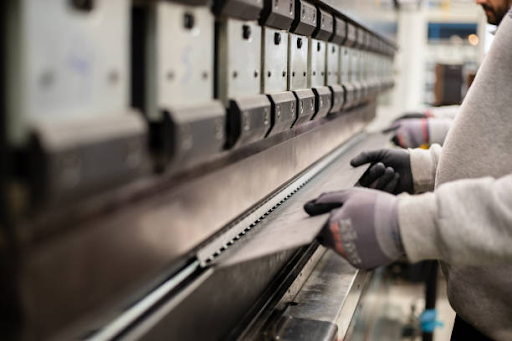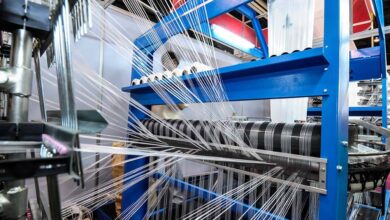Medical Sheet Metal Fabrication: Addressing the Challenges of Cleanroom Compliance

The medical and pharmaceutical industries consider precision, safety, and sanitation as their core guiding principles. The equipment used has to comply with very high cleanroom standards as defined by different authorities like the ISO and FDA. One area of concern is how the fabrication of medical equipment, especially the metal enclosures, carts, surgical trays, and diagnostic devices is done in terms of material selection and fabrication method.
Steel fabrication services capabilities have rapidly changed because of the need to produce medical grade sheet metal products. With the evolution of fabrication technology and increasing regulatory scrutiny, B2B medical equipment manufacturers have begun looking for partners who not only provide precision but also have a deeper understanding of the fine requirements of cleanroom settings.
In this article, we will analyze how medical sheet metal fabrication overcomes these hurdles, the importance of compliance to cleanroom standards, and insights that procurement professionals from B2B businesses may want to consider when picking a fabrication vendor.
A Guide To Compliance for Cleanrooms in Medical Device Fabrication
A cleanroom is an environment that has a controlled level of contamination such as in dust, dirt, specific airborne microbes, and chemical vapors. It is used for Manufacturers of pharmaceutical, Biotechnology, and Medical devices. In these fields, every component to be used in the cleanroom needs to be designed in such a way that it can be sterilized easily.
Failure to achieve cleanroom standards for medical sheet metal components can result in:
- Destruction of product integrity
- Cross contamination and Risk of Infection
- Violating regulatory and incurring fines, penalties, and recalls
- Delay in production
This is why steel fabrication services are important. Aside from the structural and mechanical information, contractors ought to have knowledge on industry specifics. In cleanrooms, specialized methods are used like non-porous powder coating and TIG welding for smooth seams, and rotary electro-polishing for passivation.
Materials Matter: Why Stainless Steel Is the Gold Standard
In the field of cleanroom-ready sheet metal fabrication, stainless steel seems to be the industry standard. Its properties make it indispensable for medical environments because of:
- Resistance to corrosion from harsh disinfectants
- Non-reactive and non-porous surface
- Able to withstand frequent sterilization
- Mechanical Stress Durability
However, not all stainless steels are alike. For cleanroom applications, 304 and 316L grades are preferred because of their susceptibility to corrosion and ease of maintenance. Using steel fabrication services with knowledge of these specific grades increases compliance and product longevity.
In less critical areas, other materials like aluminum or coated mild steel may be used, but for cleanrooms ranging from Class 10 to Class 1000, stainless steel is essential.
Cleanroom Compliant Fabrication Methods
The techniques used for the actual fabrication of the device is just as important as the materials. Use of sharp edges or welds can easily lead to the emission of particles and bacteria which is a direct violation of cleanroom protocols.
The following are key practices in fabrication:
Seamless Welding
Due to the preciseness and cleanliness in the finishing of a TIG (Tungsten Inert Gas) weld, it is usually employed in the medical sheet metal applications. The use of seamless welds can aid in the reduction of possible contamination and makes cleaning easier.
Smooth Surface Finishes
By enhancing the hygienic quality of stainless steel components, the methods of passivation and electro-polishing for example remove surface impurities and enhance micro-roughness.
Rivet-Free Assemblies
Contamination traps can be created by the excessive use of screws, fasteners, and rivets. If it is within the fabricator’s limits, as in the case of non-structural elements, such fasteners should be removed.
Modular and Ergonomic Designs
Such designs as curvilinear handrails, edging and concealed joints for steel carts, tables, and toolboxes intended for cleanroom use aid in the improvement of mobility and reduction of assembly complexity.
Integration of these processes enables the meeting of engineering functions, regulations and requirements, along with compliance with industry standards for quality and safety, making them useful in steel fabrication services.
Cleanroom Tools: Specialized Uses for Stainless Steel Parts
A wide selection of metal products is important for the proper functioning of medical settings. Several examples of such standard uses are:
- Surgical trays and enclosures for sterile medical tooling
- Medical and laboratory mobile carts and workstations
- Cabinets and wall panels for cleanrooms
- Surgical and diagnostic imaging equipment
- Hoods and systems for controlled airflow
Items such as cleanroom steel toolboxes, while straightforward in design, require meticulous attention to steel hygiene through steel fabrication services. Here, beauty is sacrificed in favor of sanitary sterility, chemical resistance, and structural integrity.
Mobility is essential in many cleanroom layouts. Carts and cabinets must not create disturbances as particles mix with airflow. Thus, cleanroom furniture usually incorporates lightweight durable materials outfitted with medical-grade casters and ergonomic handles.
Considerations for Choosing a Medical Fabrication Partner for B2B Buyers
The choices made concerning a partner for steel fabrication influence compliance, product quality, and operational effectiveness. In the search for a medical service provider, B2B buyers must take into consideration the following critical areas:
Cleanroom Fabrication Understanding
Not all fabricating shops have the requisite understanding of the medical cleanroom industry. Having worked with a medical or pharmaceutical client provides an edge.
Material Traceability and Certifications
Obtain certificates of the material grades being utilized, as well as certificates of ISO 13485 (includes medical device quality management systems) and other relevant documents.
Precision And Quality Control
The use of CNC machines and automated inspection systems, along with automated quality control, should be employed by the facility to achieve repeatable accuracy.
Design Hygiene Features
The fabrication partner needs to assist the primary designers in ways that enhance sanitation such as relating the surfaces to aids for drainage.
Scalability
It is important that your fabrication partner manages production that scales with your business while ensuring quality standards are met.
Ensuring compliance with business, ergonomic efficiency, and regulatory compliance at the same time can provide a competitive edge toward dealing with rough compliance cycles.
Looking to the Future: Innovations and Automation in Medical Metal Fabrication Now
The fabrication techniques employed to aid modern medical engineering need to be advanced alongside the supporting medical technologies. Some emerging trends include:
- Robotic welders for hyper welding accuracy.
- Industry 4.0 equipment with built in sensors.
- Automatic material moving systems for decontamination.
- Ultra precise laser cutting and laser welding.
Also, cutting software powered by AI is enabling engineers to perform airflow and stress simulations, further diminishing the chances of errors and acceleration time-to-market.
Steel fabrication services are adopting more sophisticated data technology; real-time observation and predictive maintenance are now offered, enhancing both throughput and quality.
Summary: The Clean Medical Environment’s Steel Fabrication Frontier
Medical sheet metal fabrication is not simply cutting and welding anymore. It has grown into a sector defined by rigorous compliance framing cleanliness, precision, and scalability. For B2B Medicals, using the right steel fabrication services offers a competitive advantage in compliance and efficiency whilst differentiating from competitors and improving business impact.
Every fabricated component, such as cleanroom carts, toolboxes, and enclosures, must be designed with the environment in mind. The ideal partner for fabrication does not only provide parts; they provide assurance in the crucial areas.




